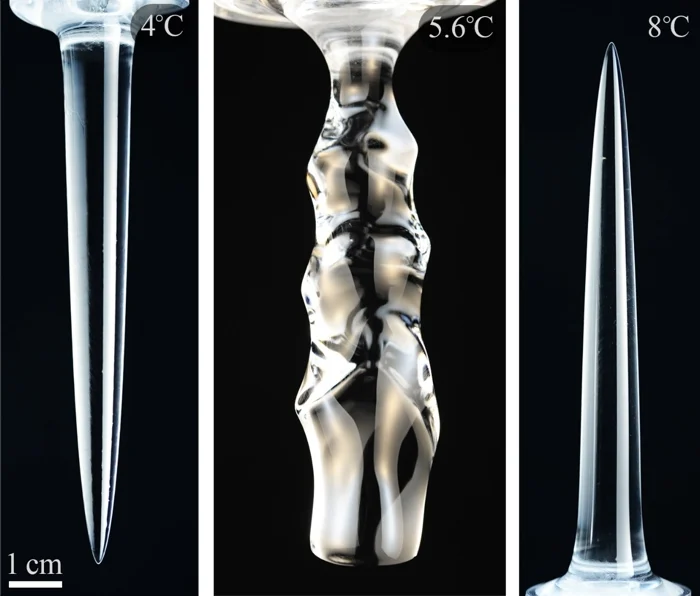According to the research team studying the process behind the melting of ice, it can take different shapes depending upon the temperature of the water around it. New research reveals the facts corresponding to the new insights into the complex physics that is associated with this complicated transition of the shape of ice.
The team of researchers created ultra-pure clear ice to perform experiments. It was kept free from impurities. They had observed the ice melting as it was dropped into freshwater tanks in a specially oriented cold room.
The vast alterations in the shape of ice were recorded using time-lapse photography. Mathematical models were also used to discover the underlying processes that changed the shape of ice.

Experimental physicist, Leif Ristroph from New York University says, “The shapes and patterning of ice are sensitive indicators of the environmental conditions at which it melted, allowing us to ‘read’ the shape to infer factors such as the ambient water temperature.” He further said, “We focused on the cold temperatures – 0 to 10 degrees Celsius [32 to 50 degrees Fahrenheit] – at which ice in natural waters typically melts, and we found a surprising variety of shapes that formed.”
Researchers observed that at very cold temperatures, the ice pieces took on the shape of a spike pointing in a downward direction. At higher temperatures, the spike was pointing upwards. For intermediate temperatures, the ice became wavy as it melted. Such differences were due to the changes in water flow caused by the change in temperature.
Researchers explain that the temperature of the water around the melting ice becomes layered, which is a sign of the changing density of the liquid. As heavier liquid sinks and the lighter liquid rises due to gravity, melting happens at different rates at different places on the ice, resulting in shape alterations. Moreover, the spikes pointing downward correspond to the upward water flows and the upward spikes correspond to the downward water flows.
Scientists have knowledge of how the process of melting creates flow patterns. It is possible that in the future, they would be able to comprehend how ice is melting just by looking at its shape.”Our findings help to explain some characteristic shapes of ice seen in nature, specifically the so-called pinnacle morphology of icebergs that consists of sharp spikes or spires and the so-called scallops that consist of wavy patterns of pits,” says Ristroph.


